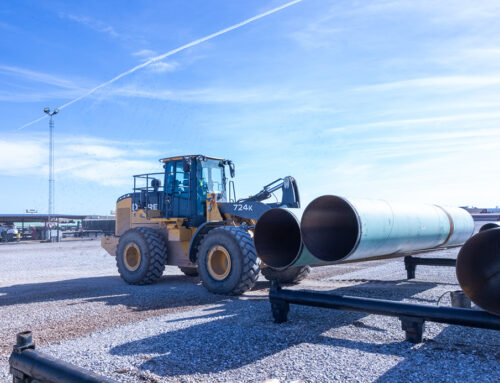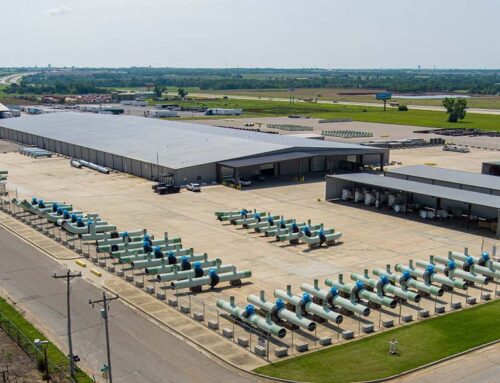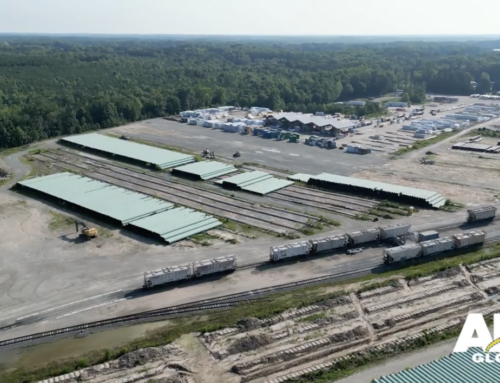The pipeline construction market landscape is ever-changing as external forces constantly manipulate and influence the flow of projects around the nation. You could count through every one of Porter’s Five Forces to see how they apply, but right now, changes in demand for fuel – specifically types of fuel – are a major influence on the market and pipeline projects.
In today’s energy market, three major emerging fuel trends are becoming major market movers: LNG, hydrogen, and CCUS (Carbon Capture, Utilization, and Storage). These emerging trends are driving new pipeline construction projects across the nation.
Liquified Natural Gas
Increased Investment and Market Size in LNG Projects
A major increase in LNG projects is taking over the Gulf Coast and Permian Basin area. In a recent example, the U.S. Federal Energy Regulatory Commission approved the Louisiana-based Driftwood natural gas transmission pipeline project. According to the project’s developer Tellurian Inc., the pipeline will supply up to 5.5 billion cubic ft of natural gas daily. Sempra Infrastructure is also set to develop, construct, and operate its own LNG project in Port Arthur, with an associated capacity of approximately 13 million metric tons per annum.
The LNG boom, with the onslaught of proposed and approved LNG projects, is expected to boost LNG supply by 67%, increasing supply and potentially saturating the market. The project investment in the US is expected to push the nation to become the world’s biggest exporter of LNG in 2023.
International LNG Drivers
International demand in Asia and Europe for natural gas is a major driver for the increase in LNG investment. Many Asian countries are turning to the LNG market because gas is much cheaper than traditional coal. As of April 2023, the U.S. approved exports of LNG from the Alaska LNG project, expanding the United States’ capacity to ship natural gas from the Arctic to Asia.
Europe is also demonstrating an increased need for LNG products, due to Russia’s invasion of Ukraine and subsequent sanctions from Western nations.
More Projects Means Competitive Pricing Pressures
This increase in demand simultaneously creates an increased need for capital efficiency. LNG projects exist in a cost-competitive market that benefits from capital-smart development. Projects are looking for ways to optimize cost structures, including creative and cost-effective ways to source projects and electrify operations using low-cost or renewable fuels.
Hydrogen
There is much left to discover about how to safely and effectively transport hydrogen. Even so, there are approximately 1,600 miles of hydrogen pipelines currently in operation in the United States, and that number is expected to grow with recent initiatives to decarbonize energy. By 2030, hydrogen production is expected to exceed 10 million tons p.a. with an estimated $500 billion invested in hydrogen projects. China has emerged as a potential hydrogen giant with more than 50 projects following its announcement of net-zero emissions by 2060.
Several factors create major barriers to expanding hydrogen pipeline delivery infrastructure, including:
- High initial capital costs of new pipeline construction
- Uncertainty surrounding safety and pipeline integrity
More research and development into efficient hydrogen transportation is needed before the vision for the future can become clear.
Small Steps in the Hydrogen Direction
There has been incremental action in moving forward with hydrogen pipeline projects. The Northeastern United States is looking to the hydrogen industry to progress sustainable climate action and bring positive economic benefits. New York, New Jersey, Maine, Rhode Island, Connecticut, Vermont, and Massachusetts have proposed a Northeast Regional Clean Hydrogen Hub to the U.S. Department of Energy. The proposal includes a $3.62 billion investment to advance hydrogen projects.
Carbon Capture, Utilization, and Sequestration/Storage
As companies look to decarbonize their footprint in response to financial pressure to incorporate sustainability, carbon capture, utilization, and storage/sequestration (CCUS) is an alternative many energy companies are looking to or already have invested in.
Due to strengthening government policies and advancing technology, CCUS is often an obvious choice for industries that may struggle with reducing carbon, including the cement and chemical production industries.
Graph: Carbon Capture and Storage Projects, Global CCS Institute (below)

Supply Chain Challenges & A Proposed Streamlined Solution
One limit to the expansion of these emerging trends, especially the influx of LNG projects, is slow-to-recover supply chains. Kinder Morgan is currently facing supply chain constraints in its expansion of the Permian Highway Pipeline, causing a delay in its expected in-service date later this year.
Re-Sourcing for Streamlined Sourcing and Supply
Re-sourcing assets is an alternative to tied-up or expensive supply chains. Using materials immediately available on the ground can reduce project costs and expedite construction timelines. In other words, projects can be built cheaper and make money sooner. It is also a more sustainable option than manufacturing new pipes at steel mills with a high rate of emissions, reducing the carbon footprint of pipeline projects.
Learn more about the benefits of re-sourcing assets and stay updated with pipeline market news at arsglobal.com.






